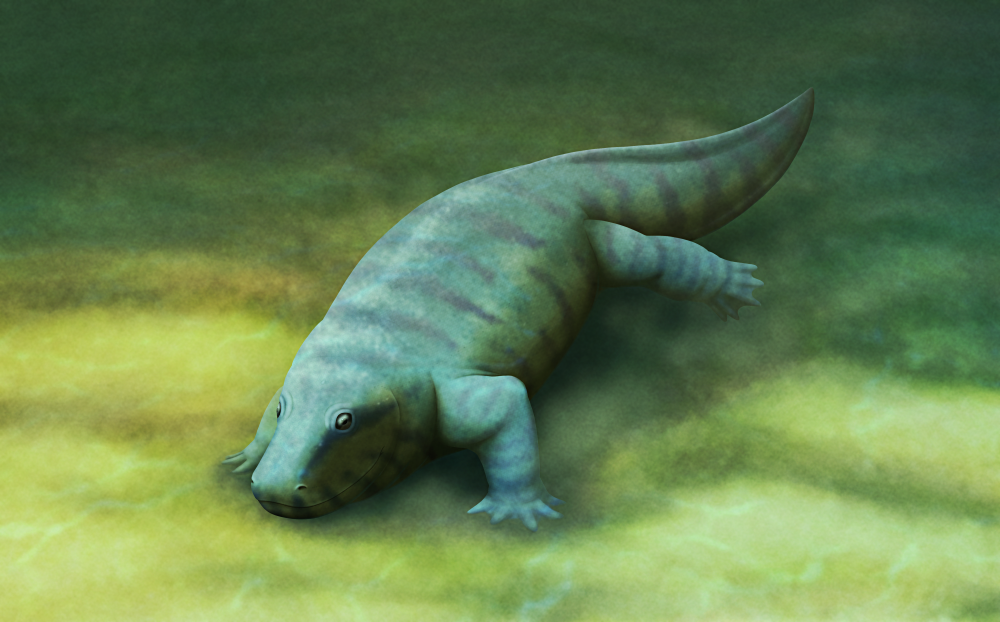Whatcheeria deltae here was an early tetrapod from the Early Carboniferous, about 340 million years ago, descended from the earlier fish-like forms and closely related to the ancestors of modern amphibians and amniotes.
Hundreds of fossils of this species have been found in Iowa, USA. Most represent juveniles, but rare larger specimens suggest fully-grown adults reached at least 2m long (6’6″).
Its large chunky limbs and flat feet seem to have been well-adapted for walking, with body proportions similar to later temnospondyl amphibians. But its cartilaginous ankles and the presence of lateral lines on its skull suggest it was still primarily aquatic, possibly walking along on the bottom of the ancient lakes, rivers, and swamps it inhabited.
It also had an unusually long neck and oddly-shaped skull for such an early tetrapod – most other known species had rather wide and flat skulls, but Whatcheeria‘s head was instead proportionally taller and narrower. Along with heavily reinforced sutures between the bones of its skull, it would have had a very powerful bite and been able to resist the twisting forces of large struggling prey in its jaws, suggesting it was a specialized crocodile-like predator.

